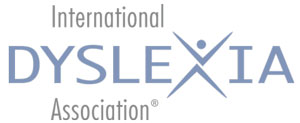Share This: 

Volume 8, Issue 2
June 2019
By Margie Gillis, EdD
Universal Screening and Diagnostic Assessments

Several years ago, someone asked me to name an education policy I would recommend for implementation to improve reading performance in our state. I responded without hesitation. Require districts to use a universal screener to find students at risk for struggling to learn to read. Three years later, after demonstrating the positive impact of a screener on third graders’ reading scores—in 10 pilot schools—a universal screening policy was adopted in Connecticut.
The new policy requires districts to administer an approved screener, chosen from a menu of five options, three times a year. Referred to as curriculum-based measurement (CBM), these assessments are designed to identify students who are not making expected progress. They are brief, easy to administer, and provide information useful for making instructional decisions.
Although a beneficial first step, use of a universal screening assessment is not sufficient. For students who are identified as being at risk, teachers must figure out what is contributing to their poor performance.
Although a beneficial
first step, use of a universal screening assessment is not sufficient. For students who are identified as being at risk, teachers must figure out what is contributing to their poor performance. This process—called “digging deeper”—uses both formal and informal diagnostic assessment tools to determine why a student is struggling. These additional measures provide important information related to specific skills that students must master to become proficient readers. Unfortunately, these tools, which provide critical data to inform planning of instruction for students who perform below benchmark on a CBM, are used infrequently, inconsistently, or not at all.
What Have We Learned?
Despite the fact that screeners and diagnostic assessments have been in use for decades, there are several explanations for the confusion around how, when, and why to use them. First, many teachers have low levels of assessment knowledge (National Council on Teacher Quality, 2018). Too often, teachers begin teaching with insufficient knowledge of the various types of literacy assessments and the purpose each one serves. Equally concerning, many teachers tell us that they have not been trained to interpret the data. And for those who may know how, teachers admit to not having the time they need to analyze the information in order to figure out where their students’ problems lie and to make informed decisions about which instructional steps will be most effective.
Education is famous for a one-size-fits-all approach. Every student receives all of the assessments—whether they need them or not. And all students who fall below grade expectations often receive the same intervention—regardless of the root cause of their reading problem. Without diagnostic assessments to identify the nature of the reading difficulties, instruction will not be as targeted and effective as needed to ensure growth.
Without diagnostic assessments to identify the nature of the reading difficulties, instruction will not be as targeted and effective as needed to ensure growth.
When diagnostic assessments are used to identify the skills that need to be taught, an intervention can be selected to teach those skills. After approximately two to four weeks of implementation, the teacher administers a brief formal or informal assessment to determine if a student is responding to the instruction. The data from progress monitoring serve to answer several important questions:
- Is the student learning the material?
- Are students in the group progressing at the same pace, or do some students need to be moved to another group?
- Is the gap between goal and performance beginning to narrow, or does the intervention need to be intensified?
It is no wonder that teachers feel overwhelmed when facing the need to make important instructional decisions that will determine the progress of their students. Nor is it surprising that a common cry from teachers is that there is no time to teach.
What Can We Do?
There are two critical steps that schools must take to ensure that screening, diagnostic, and progress-monitoring assessments are administered effectively and efficiently.
The first step is to encourage districts and schools to do an assessment inventory that surveys all teachers to find out which tools they use to assess their students’ reading skills. In my work with districts across our state, it is eye-opening to discover how many assessments are administered with little understanding about their purpose and use. When we administer assessment surveys, it is not uncommon to find teachers in the same school and grade level using a hodgepodge of different assessments with their students. Another common occurrence is to have teachers use several different assessments that measure the same basic information.
Equally disturbing is the response I often hear when I ask teachers what they do with the assessment data. They tell me they do not have time to look at the data—never mind use the data to adjust the planning of their students’ instruction. They may not even have time to score and record the data.
Although I cannot tell teachers not to give an assessment that they do not have time to analyze, it is difficult to refrain from voicing my opinion. Why bother taking time away from instruction if you aren’t going to use the information provided? But many teachers have certain routines and follow what they interpret as rules or expectations—despite the fact that they cannot always explain their reasons for doing so.
This work is labor-intensive and requires the school and district administrators’ commitment to a process that includes devoting time to training teachers on test administration and data analysis.
As we analyze the assessment survey data, we work with the school administrators and the reading team on the
second step: to eliminate redundancies and provide guidance on how to streamline the assessment process. This step includes explaining how to use a flow chart or diagnostic decision tree within a Response to Intervention (RTI) framework to determine what is driving a student’s reading difficulties and how to plan targeted instruction.
This work is labor-intensive and requires the school and district administrators’ commitment to a process that includes devoting time to training teachers on test administration and data analysis. It also necessitates allocating precious time and human resources to regular leadership and data team meetings to ensure that students are making adequate progress within each of the tiers of instruction. The needs of the students, not the adults’ schedules and demands, should drive the instructional decisions that are made along the way.
The needs of the students, not the adults’ schedules and demands, should drive the instructional decisions that are made along the way.
To reach the goal of all children reading, we must demonstrate the political will to make these necessary changes in our schools. Change will not happen without state, district, school, and teacher leadership. But until we see assessing as a blessing, rather than a necessary evil, our children will not achieve reading success and will not reach their full potential.
References
National Council on Teacher Quality. (2018, March). Pop quiz: Why should teacher candidates be trained in assessment? [Blog post]. Retrieved from https://www.nctq.org/blog/POP-QUIZ:-Why-should-teacher-candidates-be-trained-in-assessment
More from Margie Gillis:
Chronicles From the Classroom: Teachers Must Be Critical Thinkers and Informed Consumers (February 2018)
Chronicles From the Classroom: All Teachers Are Responsible for All Students’ Success (December 2018)

Margie B. Gillis, EdD, CALT, is a Certified Academic Language Therapist who became interested in reading while studying with Isabelle Liberman at the University of Connecticut. In 2009, Margie founded Literacy How to provide professional development on how best to implement research-based reading practices in the classroom. In 2010, Margie founded the Anne E. Fowler Foundation to continue the work of her mentor. Margie also is the co-founder and former president of Smart Kids with Learning Disabilities, the former president of the CT Branch of IDA, and a board member of the New Alliance Foundation. She is also a professional adviser for Read Works and Understood. The column Chronicles From the Classroom presents her experiences in the field of reading and offers concrete suggestions about what we can do to right the educational ship.
Copyright © 2019 International Dyslexia Association (IDA). Opinions expressed in The Examiner and/or via links do not necessarily reflect those of IDA.
We encourage sharing of Examiner articles. If portions are cited, please make appropriate reference. Articles may not be reprinted for the purpose of resale. Permission to republish this article is available from info@dyslexia.org.



 Several years ago, someone asked me to name an education policy I would recommend for implementation to improve reading performance in our state. I responded without hesitation. Require districts to use a universal screener to find students at risk for struggling to learn to read. Three years later, after demonstrating the positive impact of a screener on third graders’ reading scores—in 10 pilot schools—a universal screening policy was adopted in Connecticut.
Several years ago, someone asked me to name an education policy I would recommend for implementation to improve reading performance in our state. I responded without hesitation. Require districts to use a universal screener to find students at risk for struggling to learn to read. Three years later, after demonstrating the positive impact of a screener on third graders’ reading scores—in 10 pilot schools—a universal screening policy was adopted in Connecticut. 

